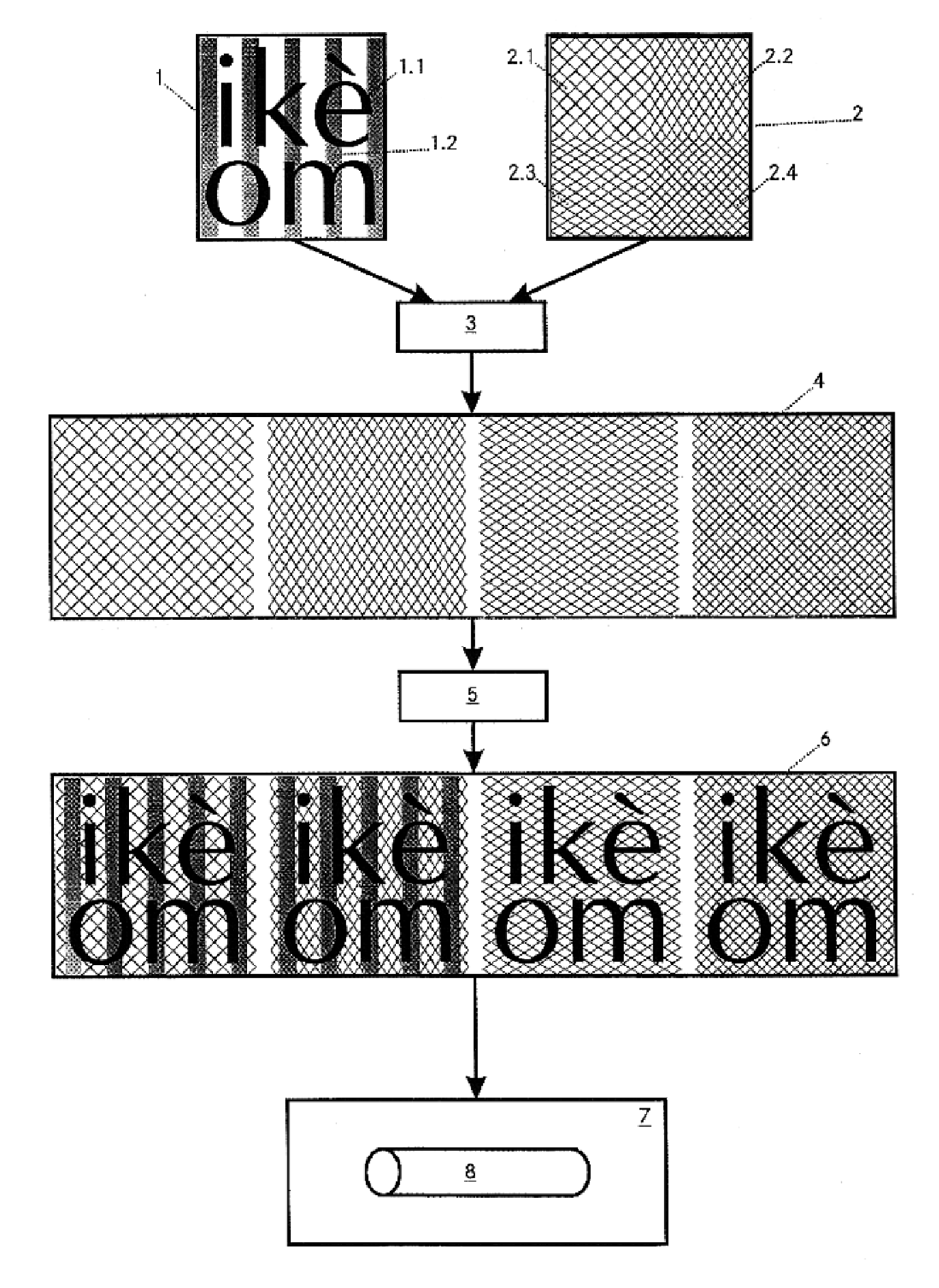Process for generation of engraving data
a technology of engraving data and process, applied in the field of engraving data generation, can solve the problems of loss of reproduction accuracy, blurred or irregular fine line patterns and fonts, and unwanted color effects,
- Summary
- Abstract
- Description
- Claims
- Application Information
AI Technical Summary
Benefits of technology
Problems solved by technology
Method used
Image
Examples
Embodiment Construction
The object of the invention is to devise a process of the initially mentioned type which ensures the highest possible image quality ("sharpness", "color precision") even in finely structured printer's copies.
The object is achieved by the features of claim 1. As claimed in the invention not simply the stipulated print density (screen fineness) is used (as is actually expected or required by the client). Rather around a stipulated print density a variation range is defined and then within this range depending on the geometry of the elements contained in the actual printer's copy an optimally matched screen is determined.
The invention is not concerned with simply choosing the finest possible screen within the (pre-)defined variation range. Depending on the type of geometry (for example, periodicity of a line pattern) it can be that a slightly coarser screen coincides with the geometry (for example periodicity) and thus allows a image of maximum sharpness. Here it is important that the ...
PUM
 Login to View More
Login to View More Abstract
Description
Claims
Application Information
 Login to View More
Login to View More - R&D
- Intellectual Property
- Life Sciences
- Materials
- Tech Scout
- Unparalleled Data Quality
- Higher Quality Content
- 60% Fewer Hallucinations
Browse by: Latest US Patents, China's latest patents, Technical Efficacy Thesaurus, Application Domain, Technology Topic, Popular Technical Reports.
© 2025 PatSnap. All rights reserved.Legal|Privacy policy|Modern Slavery Act Transparency Statement|Sitemap|About US| Contact US: help@patsnap.com



